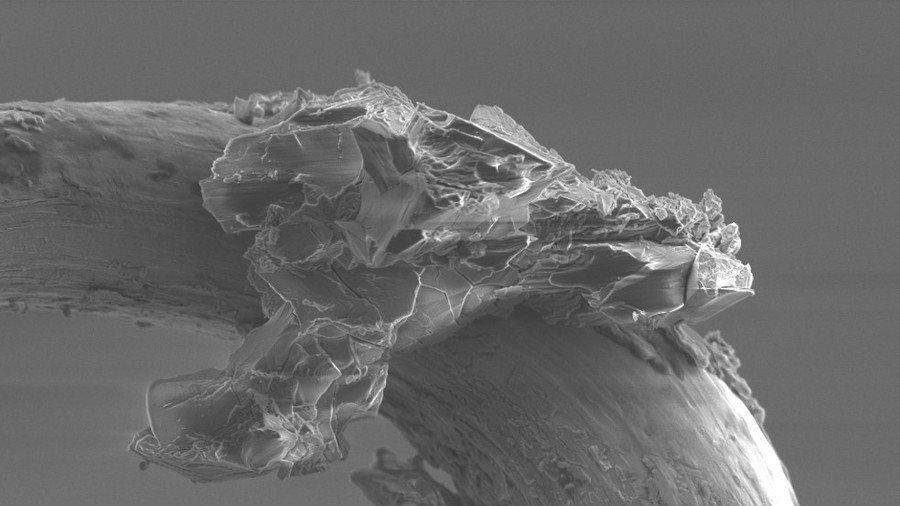Microscopic ‘grain’ of asteroid Itokawa revealed in mindblowing close-up (PHOTO)

The ESA has released a phenomenal close-up of an asteroid grain retrieved by Japan's Hayabusa spacecraft, the world's first mission to gather samples from the surface of an asteroid and return them to Earth.
The ‘out of this world’ snap shows the sharp microscopic fragment of the Itokawa asteroid in an incredibly detailed shot. It is one of three grains from the extra-terrestrial rock that are being tested by researchers at the European Space Agency (ESA).
This microscopic sharp-edged grain is a tiny sample from the Itokawa asteroid, retrieved by Japan’s Hayabusa mission and now being tested by @ESA_Tech researchers. Details: https://t.co/Nq2DNIlwtqpic.twitter.com/6KjpbzFqbq
— ESA (@esa) August 1, 2018
Some 1,500 precious asteroid grains were brought back to Earth in 2010 by the Hayabusa mission, despite several complications faced by the probe during its six-billion kilometer odyssey.
Since then, the microscopic samples measuring just over 10 micrometers in size have been studied by scientists around the world in order to gain greater insight into the early solar system.
At the ESA’s technical center in the Netherlands, researcher Fabrice Cipriani is investigating the static charging properties of the grains to understand the consequences for the surface environments of asteroids.
According to a previous analysis of the samples, Itokawa didn't always exist in its current shape and form. It was about 40 times bigger than it is now when it formed over 4 billion years ago.
The Hayabusa probe was launched in 2005, with the goal of studying the Itokawa asteroid and collecting samples to return to Earth. Last month Hayabusa 2, which has a similar objective, reached its target - the diamond shaped asteroid Ryugu. It’s due to return to Earth in December 2020 with fresh asteroid samples.
READ MORE: Giant ‘lost’ asteroid poised for one of closest-ever approaches to Earth














